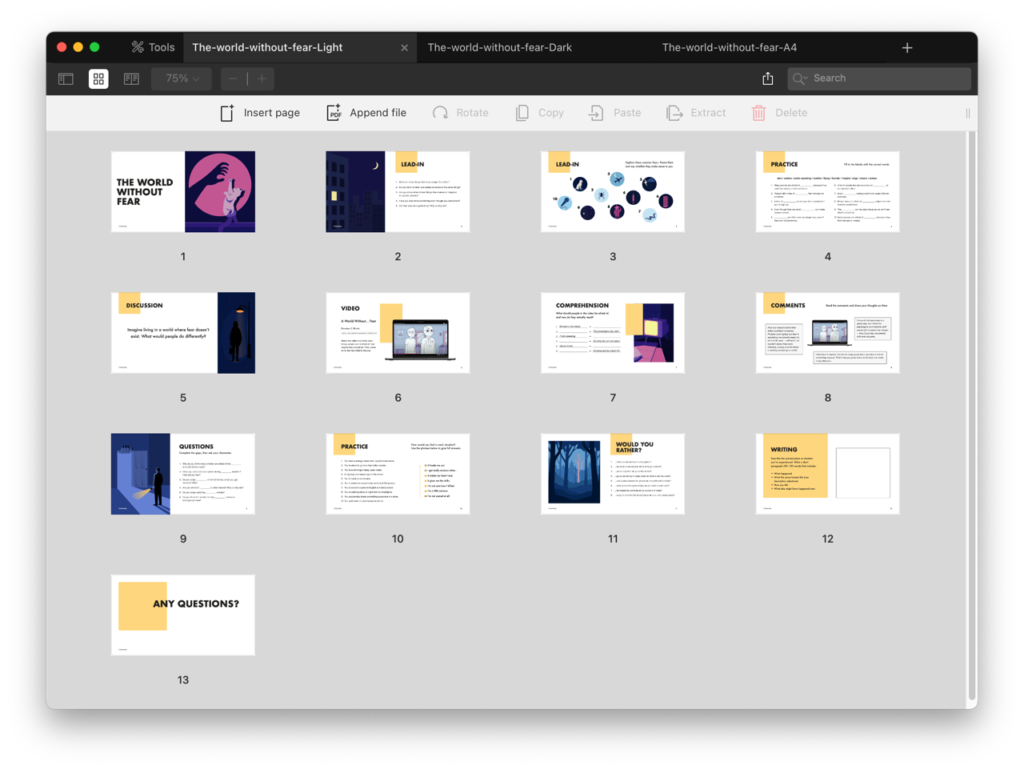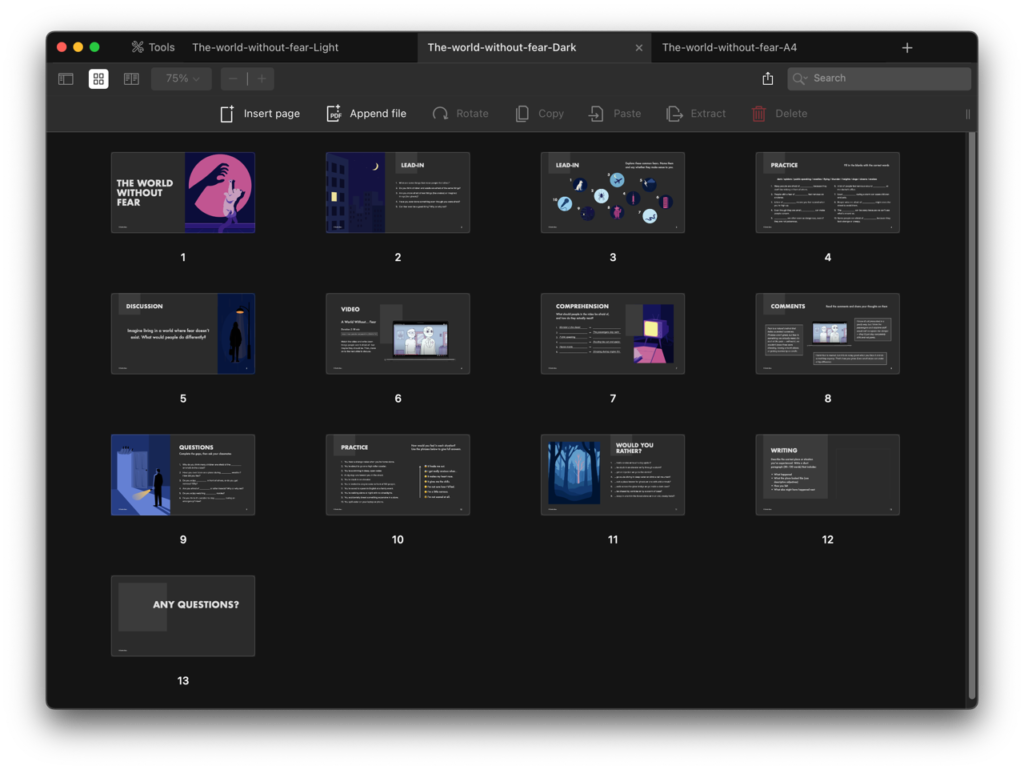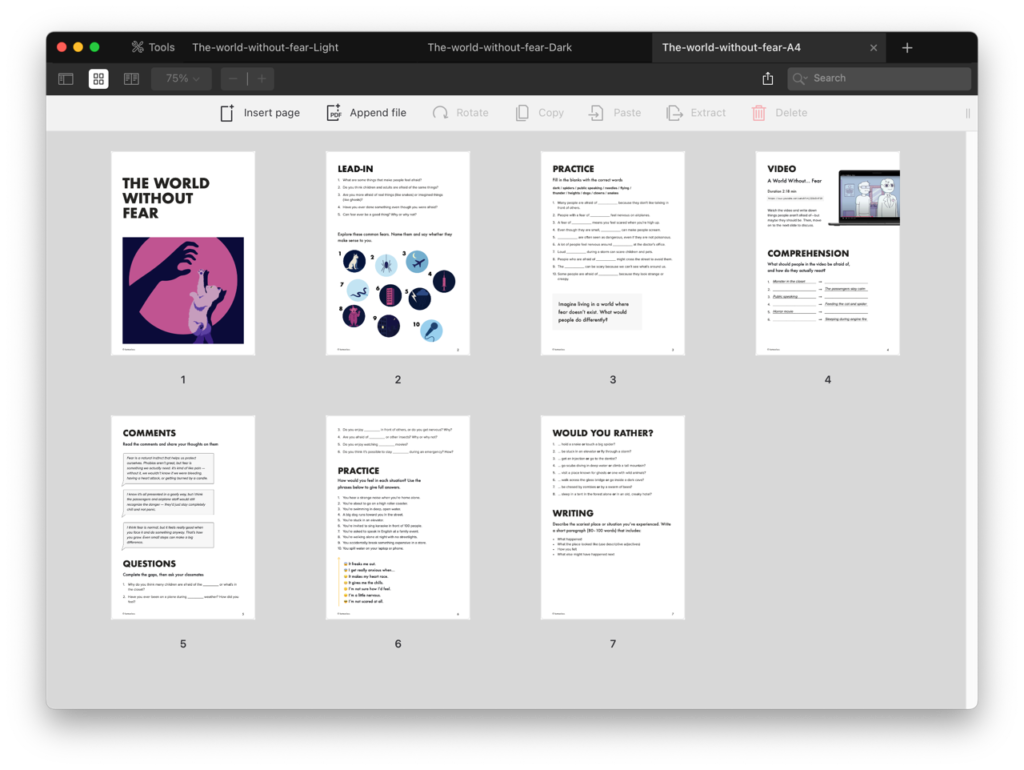The World Without Fear
This is a B1-level ESL lesson about a world without fear. In this lesson, students explore common fears and talk about different things people are often afraid of. They will take part in vocabulary activities, watch a short video about what life might look like without fear, and check their comprehension with follow-up questions. Students will also discuss the video comments and practice useful phrases for reacting to scary situations. This is a conversational lesson designed for intermediate learners, encouraging discussion, personal opinions, and emotional vocabulary.
| Level | Vocabulary | Video length | Lesson time |
| B1 / Intermediate | 10 words and 9 phrases | 2:18 min | 60 min |



Vocabulary
- public speaking
- flying
- heights
- spiders
- snakes
- needles
- thunder
- dogs
- dark
- clowns
- It freaks me out.
- I get really anxious when…
- It makes my heart race.
- It gives me the chills.
- I’m not sure how I’d feel.
- I’m a little nervous.
- I’m not scared at all.
- It doesn’t bother me.
- I’m completely comfortable.
Contents
- Lead-in
- Practice
- Discussion
- Video
- Comprehension
- Comments
- Questions
- Practice,
- Would you rather
- Writing
Lead-in
The lesson begins with a lead-in activity where students answer a series of questions related to the topic of fear. Then, they explore 10 images representing common fears. For each one, students will name the fear and discuss whether it feels reasonable or relatable to them.
Practice, Discussion
Students will also practice new vocabulary by completing a gap-fill activity using the target words. Before watching the video, they will take part in a guided discussion based on the question: “Imagine living in a world where fear doesn’t exist. What would people do differently?” This encourages critical thinking and prepares them for the video content by activating their ideas and opinions.
Video, Comprehension, Comments
Next, students will watch the video “A World Without Fear.” While watching, they will take notes on things people are not afraid of in the video—but maybe should be. After the video, they will move on to a comprehension task to check their understanding and discuss the main ideas presented. There is also a comments section where students read the comments related to the video. They will share their thoughts, agree or disagree, and exchange opinions in pairs or small groups.
Questions, Practice, Would you rather
Students will also have the chance to ask each other questions related to the topic and the video content. This encourages peer interaction and helps them build confidence in speaking. In the next activity, students will be presented with different fear-related situations and will use useful phrases to describe how they would feel or react in each one. This gives them a chance to apply new language in context. Finally, there is a fun “Would You Rather” activity with thought-provoking questions. Students will choose one option and explain their reasoning, which promotes critical thinking and fluency practice.
Writing
There is also a writing activity that can be assigned as homework. Students will write a short paragraph (80–100 words) describing the scariest place or situation they have experienced. This task allows them to reflect on what was discussed during the lesson and apply the useful vocabulary and phrases they’ve learned. It’s a great way to reinforce language and encourage personal expression.



